Recently we had a few Western Digital 4TB drives hit the lab and readied them for burn-in. There were a total of four Western Digital Red and four WD RE 4TB drives with another set we will discuss later. After having dinner with a STH reader in Dallas Texas last week, one idea was floated: do thermal imaging of hard drives much like Western Digital advertises for the popular WD Red series here under Nasware 3.0. Of course, we decided to take on the challenge.
The Western Digital Red 4TB drive uses big 3.5″ platters and a nominal rotation speed under 6000 rpm (marketed as IntelliPower) to save on power. When the drives were originally released, they were rated in NAS units from 1-5 drives. Since then, Western Digital updated its specifications to make them 1-8 drive capable. The idea with the Western Digital Red drives are to provide lower power consumption like “green” series drives while at the same time giving them the firmware tweaks to work in RAID environments, specifically when the drives try to recover from errors. The WD Red 4TB drives retail for about $175 these days, which is significantly less than the RE drives of the same capacity.
The Western Digital RE (Raid Edition) 4TB drives are considered higher-end drives. 4TB is the top capacity right now. These 7200 rpm spinners have faster transfer rates and access times than the WD Red counterparts and are considered more suitable for larger RAID arrays (where more random disk access may occur.) Of course, higher mechanical spindle speeds mean higher power consumption. The WD RE 4TB drives retail for around $299 each.
We used our FLIR Ex series thermal imaging camera and two bare drives next to each other on a non-conductive rubber mat for vibration dampening. We set the FLIR tools to our standard 24C to 60C range and took the 320×240 image. Sadly, thermal imaging is still much lower resolution than standard cameras. We hooked the drives up to the same machine and ran the exact same sequential workloads on them. Here is what we saw on the side-by-side:
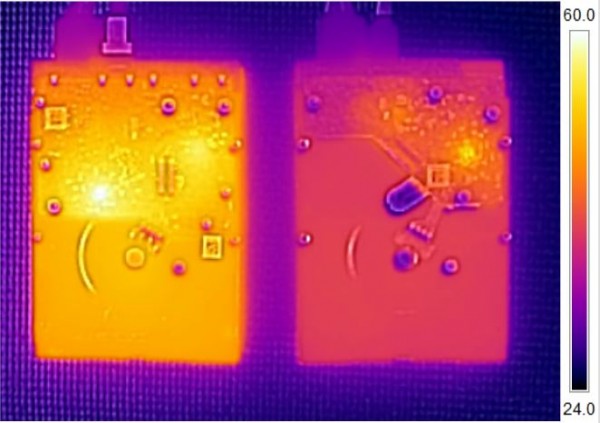
One can clearly see that the WD RE 4TB drive is running warmer (but within spec) on the left while the WD Red 4TB drive on the right is running much cooler. This includes both the metal chassis as well as the IC’s onboard.
Comparison to the WD Red Nasware thermal imaging
There is a famous comparison that many buyers of the WD NAS drives have seen before buying. From the WD site there is a FLIR image of a typical 7200 rpm hard drive (or so we can assume given there is no information on which drive it is.)
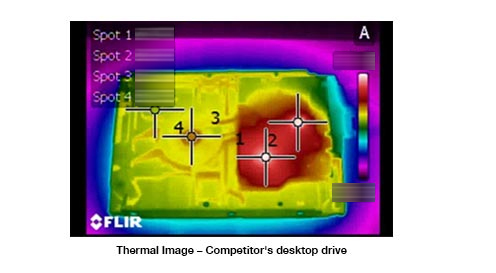
This is contrasted to the WD Red drive of unknown capacity.
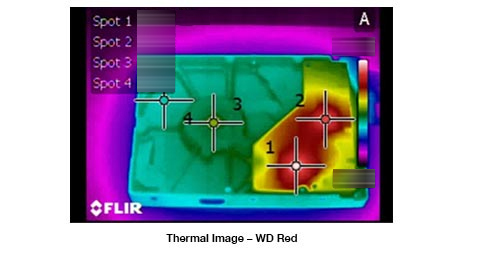
There are a few interesting points here. The first is that there are no color scales. Furthermore, there is obstruction around the spot temperatures labeled 1-4 on the drives. That made it a bit hard to compare but we decided to use the FLIR “rainbow” setting on our comparison and received an interesting result. Here is the side-by-side in rainbow next to the low light/ low quality normal snap by the FLIR:
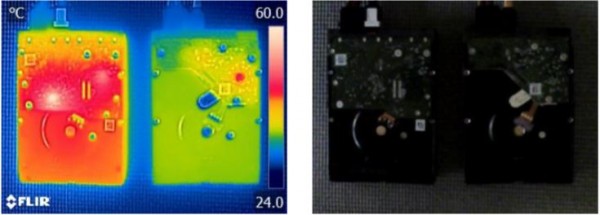
One can see that IC’s are more clearly visible due to the Ex series having FLIR MSX technology. That technology we generally leave on in our reviews as it allows one to see some of the detailed contours around the components. We decided to turn off MSX and this is what we saw:
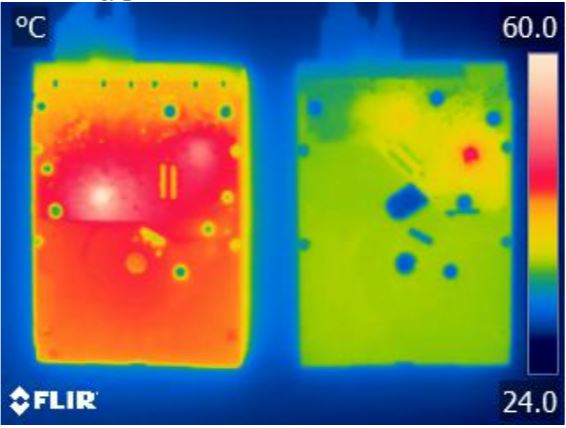
Of course, we used fewer colors than Western Digital but we did see a similar contrast between cooler Red drives and warmer faster RE drives. There is a secondary impact to remember here. That “hot” RE drive will dissipate more heat into a chassis, requiring more airflow. More airflow means higher fan speeds. Higher fan speeds mean more noise and power consumption. Something to keep in mind when filling lower end Synology, Drobo, Thecus, QNAP and other units. For higher performance applications, the RE drive is a clear choice.

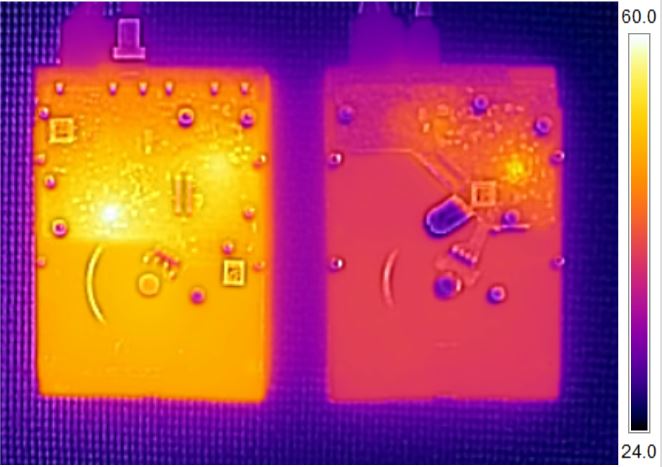



Sorry, but its super confusing that the image texts are exactly the other way around than the drives shown in the picture. Without reading the text and just by looking at the pictures and their descriptions underneath, you could come to the exact opposite conclusion…that the Red drives are a lot hotter than the RE drives.
I completely agree. Please swap the order in the text under the pictures.